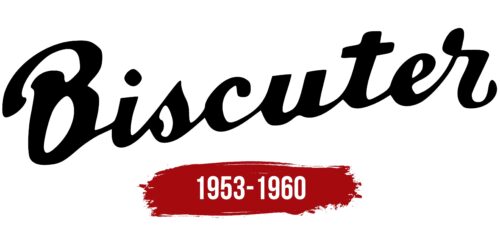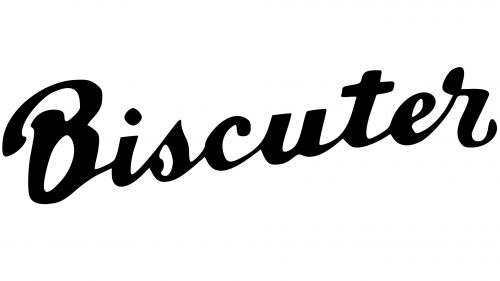The Biscuter logo is concise and simple, like the brand’s small cars. The mark emphasizes the pursuit of simple and effective solutions. It embodies ambition, professionalism, and the journey to success step by step.
Biscuter: Brand overview
Founded in 1953 by Auto Nacional S.A., a company based in Barcelona, Spain, Biscuter produced microliters.
The debut model, the 400, was a compact two-door car designed for two people. Powered by a 400cc twin-cylinder engine, it was the first in Biscuter’s line of microcars. In the 1950s, these vehicles quickly became widespread in Spain, as they were an economical solution to basic transportation needs, with annual sales reaching approximately 1,000 units.
A few years later, in 1955, Biscuter introduced a modernized version called the 600. With a more powerful 600cc engine, the car had an impressive top speed of 56 mph.
In 1958, at the Barcelona Motor Show, Biscuter presented a more sporty version of its microcar called 850, designed by the Italian company Carrozzeria Fissore.
By 1959, production of Biscuter microcars had increased to about 10,000 units per year to meet the growing demand in Spain. Various body styles and engine displacements were offered to suit customer preferences.
However, by 1960, the company’s sales began to decline due to stiff competition from larger automakers such as SEAT, which were producing more modern compact cars. Therefore, in the same year, Auto Nacional ceased production of Biscuter microliter cars, having produced about 10,000 units during the seven years of the brand’s existence.
Today, Biscuter micro cars, which have been carefully restored, are considered collectors’ items and often participate in vintage car shows and races in Spain and throughout Europe.
Meaning and History
What is Biscuter?
It is a Spanish microcar manufacturer known for its small economy cars in the mid-twentieth century. The company was named after its founder, Gabriel Voisin, who originally developed the car under the name “Biscooter” in France. The cars were later produced in Spain under the name Biscuter. These microcars were popular due to their simplicity, affordability, and fuel efficiency. Despite initial success, the advent of better and more affordable compact cars eventually led to the company’s decline.
1953 – 1960
The Spanish brand of miniature cars, Biscuter, has a distinctive logo that emerged in the post-war years. The logo is simple yet memorable. It features the name “Biscuter” in elegant calligraphic handwriting with thick and thin strokes, creating a dynamic and jagged appearance.
“Biscuter” is written with a rightward slant, positioned diagonally and pointing upward. This design suggests progress and forward momentum, reflecting the brand’s drive. The cursive script enhances the sense of movement and fluidity. A unique feature is the small angular notch in the letter “s,” adding character to the logo.
The logo is in black and white, evoking the classic feel of a black-and-white movie. This color scheme underscores its simplicity and elegance. The combination of thick and thin strokes within the letters brings to mind a winding road, aligning with the brand’s identity as a manufacturer of compact, maneuverable cars.
The upward diagonal direction of “Biscuter” emphasizes a drive toward innovation and excellence. The small angular notch on the “s” adds intrigue, resembling a secret sign or distinctive feature. This subtle detail makes the logo more engaging and memorable.
The Biscuter logo effectively communicates the brand’s values and heritage. The elegant calligraphy, dynamic slant, and monochrome colors create a visually appealing and meaningful design. This logo captures the spirit of the post-war era and reflects the brand’s commitment to innovation and quality.





